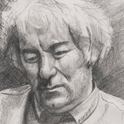
This is a significant book, for all the wrong reasons. It is the kind of history of science that scientists used to write a century ago, and shows that little has changed in the standoff between scientists (Weinberg is a physics Nobel laureate) and science historians.
Weinberg is happy to award medals on the basis of congruence with modern scientific ideas, and to assess the contributions of the past according to whether he, as a working scientist, feels “at home” among them. He is still content to equate the emergence of “modern science” with the mathematical and mechanical physics of Galileo and Isaac Newton: one learns little more about the progress of chemistry and biology than that they later “followed the model of the revolution in physics of the 17th century,” which will be news to industrial chemists and cell biologists today. He merrily (proudly?) admits to being Whiggish.
There is a reason for all this: what Weinberg really cares about is how the world works. If that’s your preoccupation, you are forced to be highly selective among ancient and early modern thought. But it makes for poor history, and promises no fresh insight into the history of ideas or the way science has interacted with the cultures in which it has been embedded. The tragedy is that Weinberg is one of the best expositors of scientific ideas among its leading practitioners, and his prose is never less than lucid. But on this showing, it remains unwise to entrust scientists with their own history.












